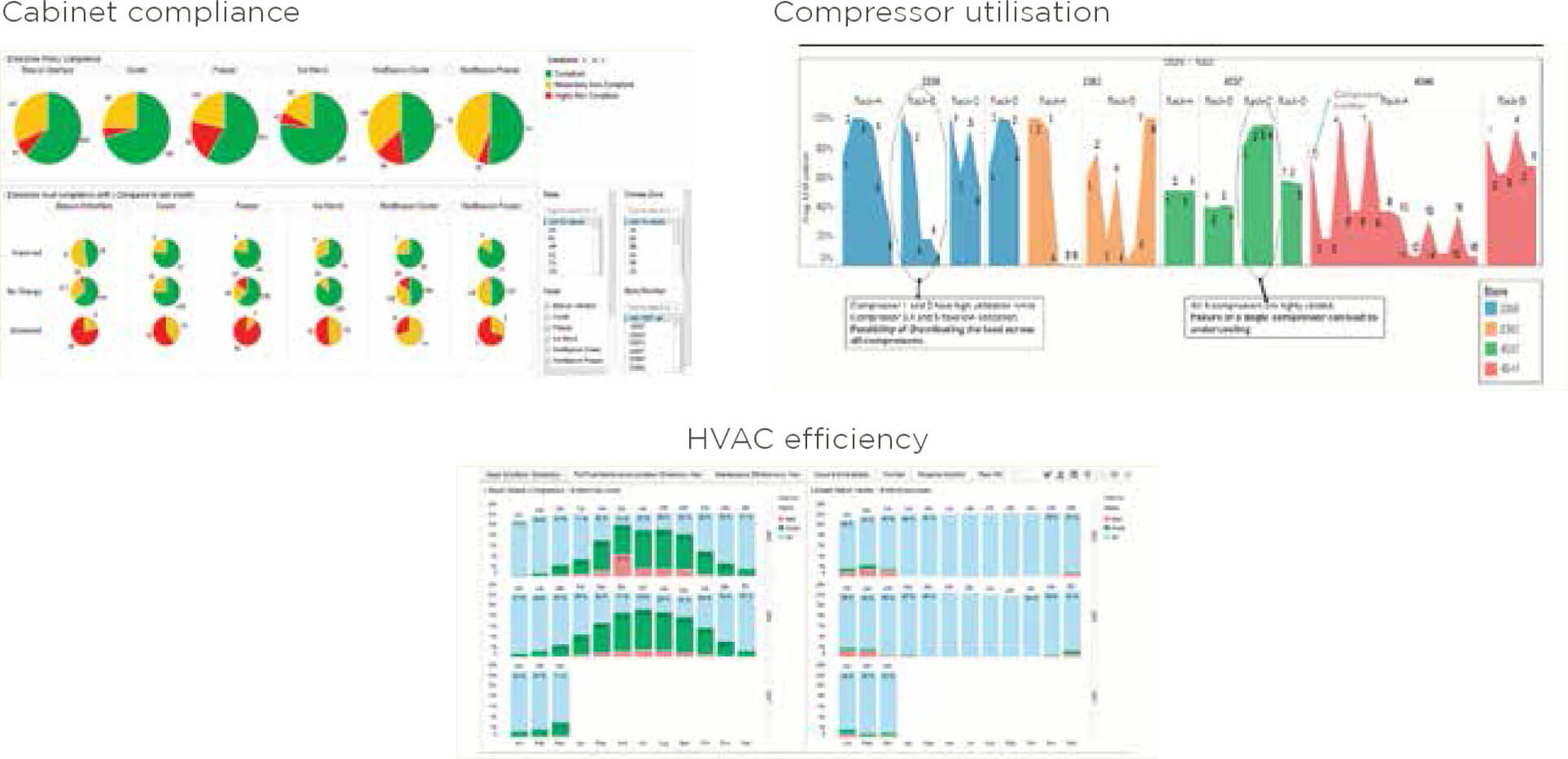

Digitally transform your retail grocery operations through actionable insights
Every store and piece of equipment in your network is unique, and so are the business goals associated with them. We understand the context in which these operate. The CORTIX™ AI-enabled Building IoT platform collates, contextualises, and analyses IoT data from your equipment and business data. This analysis yields actionable insights that are utilised by our domain experts to optimise your equipment performance, deliver energy efficiency, and transform the maintenance of your facilities. 24/7 remote assistance is provided to store associates and technicians to resolve issues arising at your sites. Irrespective of the type of equipment manufacturer, type of systems (HVAC, lighting, and refrigeration), and the associated controls, our solutions deliver measurably better results for you.
On average, a supermarket in Europe has an annual energy intensity between 400 kWh/m2 to 600 kWh/m2. Based on average supermarket size the annual energy cost can range between 16,000 EUR to 150,000 EUR. Refrigeration and lighting account for over 50 percent of total energy usage in an average grocery store with HVAC being the third largest contributor. While retrofitting is easier for lighting and provides a one-time energy saving, it is quite expensive and challenging to carry out retrofits for HVAC and refrigeration technologies. Through operational and maintenance-based improvements, we help you continuously optimise the electricity and maintenance cost without significant capital expenditure.
With a wide spread of stores across countries, retailers also struggle to manage food safety compliance. On one hand is the reactive approach of alarm-based monitoring and dispatches; on the other hand, some technicians operate the system beyond the required threshold, out of caution – leading to excessive energy consumption and reduced equipment life. Purely alarm-based monitoring may not be the right approach. In certain grocery retail environments, we have observed that 35% of the alarms occur during fixed periods in the morning when employees are in stores prior to opening to customers. We attribute these alarms to doors being left open during the stocking process. In other cases, poorly configured alarms were a significant cause of false alarms, e.g. cases triggering temperature alarms during and immediately after a defrost cycle.
If HVAC equipment are unable to manage space cooling and humidity as desired, it creates undue stress on refrigeration and increases overall energy spend. By acquiring deep insights into overall store equipment operations, we help you identify and eliminate inefficiencies.
Enhance your food safety compliance as well as save energy and maintenance costs with our continuous monitoring, advanced analytics, and actionable intelligence.
Effectively manage compliance
Proactively analyse thermal compliance of refrigeration cases. Receive early indicators of non-compliance along with the potential causes, thus enabling proactive action to ensure food safety and lower shrinkage
Reduce food loss through policy adherence for walk-in coolers and conditioned preparation rooms
Achieve employee and customer comfort through proactive action across stores
Boost operational efficiency
Achieve energy savings through the effective management of lighting and HVAC schedules
Optimise HVAC performance and dehumidifier operations
Record and report case temperatures electronically, and monitor door status
Enhance equipment performance through recommended optimisation of defrost cycles, detecting refrigerant leaks, and fixing compressor efficiency issues
Improve equipment health and lower maintenance cost
Reduce total cost of ownership by transforming the maintenance process through data and improving the field maintenance effectiveness.
Identify proactive maintenance opportunities through comprehensive analysis of compressor health, high cycle times, equipment utilisation levels, detecting sensor failures, and sub-optimal control strategies.
Reduce the number of site dispatches through remote actions and proactively cover more equipment in every technician visit. This also reduces emergency dispatches.
Evaluate the effectiveness of maintenance visits through equipment performance analysis by the CORTIX™ platform, both before and after maintenance. Enforce workmanship warranties if required.
*Energy wastage incidents such as:
(1) Operation of equipment outside of operating hours (2) Compressor efficiency issues (3) Overcooling in the summer (4) Scheduling inefficient equipment in place of efficient equipment (5) Detecting refrigerant leakages , and running excess lights when only the employees are in a store, which is not open for business (6) High night load when stores are unoccupied.
Enterprise and store level dashboard views

Write to us at [email protected] and elevate your business now.